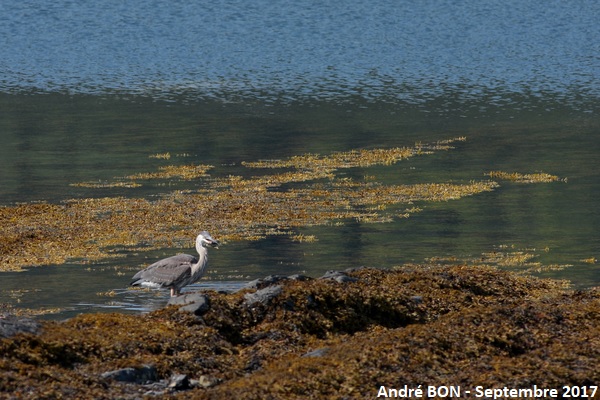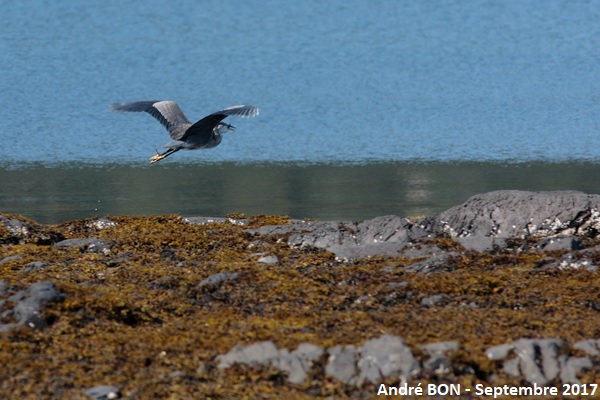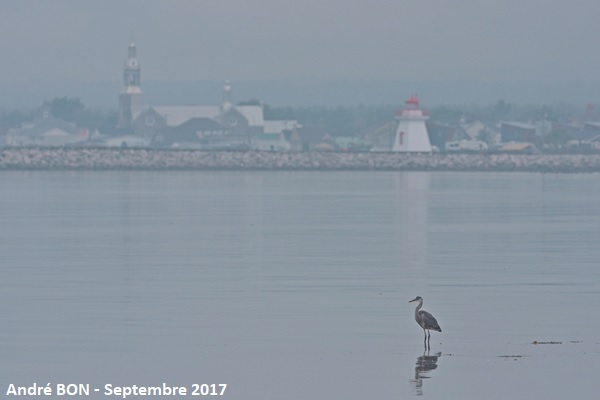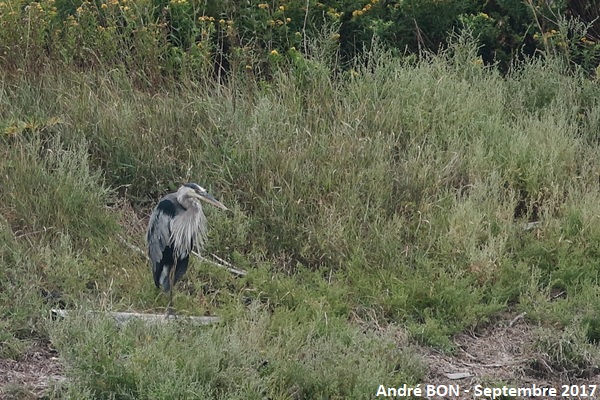



| Great Blue Heron (Ardea herodias (Linnaeus, 1758)) |




|
|
Scientific name: Ardea herodias (Linnaeus, 1758) Common name: Great Blue Heron French name: Grand héron Order: Pelecaniformes Family: Ardeidae Size: Body size: 91 to 137 cm; Weight: 1.8 to 2.5 kg; Wingspan: 165 à 200 cm. Habitat: Wetlands, lakes, mudflats, marshes, mangroves. Food: The Great Blue Heron feeds mainly on fishes but it can also feed on a large number of other preys such as amphibians, reptiles, crustaceans, aquatic insects, small mammals and small birds such as ducklings for example. Nesting: The Great Blue Heron nests in colonies in trees along lakes or wetlands. There is usually a clutch of 3-5 eggs in April-May. Migration: Northern Great Blue Herons that live east of the Rocky Mountains move southwards to the southern United States, Mexico, and as far as the Caribbean and north-western South America in winter. Geographic area: There are 5 subspecies Ardea herodias herodias: Northern North America, except for the presence of the other subspecies described below. Ardea herodias fannini: Coasts of the Pacific Ocean from southern Alaska to Washington State. Ardea herodias wardi: From Kansas and Oklahoma to northern Florida. Ardea herodias occidentalis: South Florida and West Indies. Ardea herodias cognata: Galapagos Islands. |
The Great Blue Heron has white top of head. On either side, a black stripe runs from the yellow eye to the long and thin black feathers on the back of the head. The back and wings are greyish blue. The breast is white streaked with black. In breeding plumage there are long feathers on breast, flanks and back. The different subspecies differ only in tones of colours except the occidentalis subspecies which is totally white. |
| [To know more about the Great Blue Heron] [Next picture] [Top] |

|
This Great Blue Heron observed from quite a distance has just caught a fish. |
| [To know more about the Great Blue Heron] [Next picture] [Previous picture] [Top] |

|
We must have disturbed this Great Blue Heron so it is going to eat its fish a little further. |
| [To know more about the Great Blue Heron] [Next picture] [Previous picture] [Top] |

|
Quietly fishing! |
| [To know more about the Great Blue Heron] [Previous picture] [Top] |

|
You can clearly see the long feathers on the flanks and breast on this picture. |